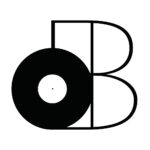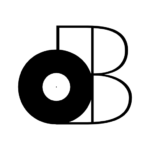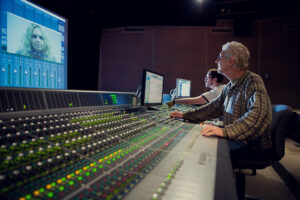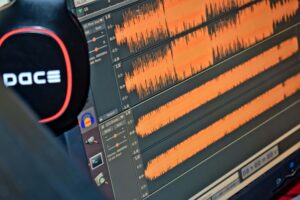You’ve probably already heard of the many benefits of using direct boxes (DI boxes), so I’m sparing you the details in this article. The question we’ll be answering is “which DI box do I need” because there are many different types of DI boxes out there. After reading, you’ll know exactly which product you’ll need depending on the instrument(s) you’re using and the application!
Choosing the right DI box; it’s like choosing the right tool for the job. The first thing we’ll need to consider is the output-impedance of the instrument/device you’ll be using. Instruments like guitar/bass require DI boxes which can handle higher voltages. It’s even more important to consider if they’re using active/passive pickups. Similarly, there are also both active/passive DI boxes and there’s even another “special” category that includes DI boxes with specific functions. If it sounds overwhelming, you’ll be surprised how knowledgeable you’ll become after taking the time to study this guide. The last thing I want to mention is that we’ll be looking exclusively at DI boxes by Radial Engineering since they’re basically the industry-standard. Let’s get started!
ACTIVE DI BOX
- You need the Radial Pro48 Active DI box if you’re mainly using passive instruments
- You need the Radial J48 Active DI Box if you’re using both active/passive instruments
PASSIVE DI BOX
- You need the Radial ProDI Passive DI Box if you’re using high-output instruments
- You need the Radial JDI Passive DI Box if you’re using high-output instruments, but want more quality
SPECIAL DI BOX
- You need the Radial JDX 48 Amp DI Box if you want to record using your amplifier’s speaker output
- You need the Radial PZ-DI if you’re using instruments with Piezo pickups
CONCLUSION
ACTIVE DI BOX
You need the Radial Pro48 Active DI Box if you’re using both active/passive instruments
So, which DI box do I need if I’m looking for an all-in-one solution? I asked myself the same question before purchasing my first DI box and the Radial Pro48 seemed to be the most affordable, yet most versatile product.
It’s powered by your audio interface’s +48V Phantom Power and has been designed to work with both active/passive instruments.
| Frequency Response | 20 – 20,000 Hz |
| Dynamic Range | 99 dB |
| Input Impedance | 220 kOhm |
| Output Impedance | 600 Ohm |
| Noise | -82 dB |
| Maximum Input | +9 dBU |
| Features | Attenuation, Ground Lift |
I’ve personally used the Pro48 with active/passive guitars and active/passive bass guitars. However, you can also use it with electro-acoustic guitars equipped with pickups. Since its internal rail voltage sits at 9-Volts, you’ll be fine with most active instruments (they usually don’t exceed 7-Volts).
Considering the fact that the Radial Pro48 doesn’t include more than one input, you won’t be capable of using it in stereo with keyboards, mixers, etc…
One of the advantages of using active DI boxes like the Pro48 is the “transparency”. In other words, they won’t colour your sound like passive DI boxes would. It’s really a matter of personal preference, but your instruments will sound exactly as they are.
The additional throughput is also excellent for duplicating your original signal to feed into your amplifier simultaneously.
For example, you may want to record your DI signal and use microphones to record your amplifier at the same time to have options. It’s mostly used in live situations, but I use this technique in the studio all the time!
Lastly, the -15 dB attenuation is really important for active instruments. Even if the Pro48 has been designed to handle the voltage, my active guitars/basses are usually WAY too loud. I don’t usually need to use it with passive instruments though.
So, the Radial Pro48 is perfect for active/passive guitars/basses and electro-acoustic guitars.
You need the Radial J48 Active DI Box if you’re looking for maximum headroom and minimum noise
If you’re willing to spend more, I strongly recommend splurging on the Radial J48. It’s pretty much the same product as the Radial Pro48, but one of things it does better involves its dynamic range (+10 dB to be precise).
The J48 is basically the “premium” version of the Pro48 and also produces less noise.
| Frequency Response | 20 – 20,000 Hz |
| Dynamic Range | 109 dB |
| Input Impedance | 220 kOhm |
| Output Impedance | 200 Ohm |
| Noise | -99 dB |
| Maximum Input | +10 dBU |
| Features | Attenuation, Ground Lift, Merge, Polarity, HPF |
The fact that it’s been designed to handle louder transients also makes it more suitable for drum modules/drum machines. In these cases, the optimized signal-to-noise ratio can also make this unit more beneficial. The J48 produces -16 dBU of input noise and -17 dB of internal noise less than the Pro48.
However, my favourite feature is the ability to transform the J48 into a passive summing mixer.
Basically, the J48 includes a “merge” function that can convert its input/throughput into two passive stereo inputs. The resulting output will contain both signals mixed down into MONO. It’s great if you wanted to sum the left/right channels of your keyboard instead of having the stereo image.
If you wanted stereo though, you could also consider the J48 Stereo instead!
Other than that, the J48 also includes the same features as the Pro48 with the additional HP Filter (80 Hz) and polarity reverse (useful if your audio interface doesn’t include this feature). In my opinion though, these features are more useful in live situations.
That being said, I think the Radial J48 would be the better option for stage-use. However, it’s just as good for studio sessions and I especially recommend it if you’re playing an electronic drum kit (use the J48 Stereo though).
The Radial J48 does everything the Pro48 can do and more! If you’re working in stereo you’ll need the J48 Stereo.
PASSIVE DI BOX
You need the Radial ProDI Passive DI Box if you’re using high-output instruments
So, which DI box do I need if I’m using high-output instruments? In other words, we’re looking for the DI box most suited for high-impedance instruments and we’re starting with the Radial ProDI.
Active DI boxes can work with both high/low impedance sound sources, but Passive DI boxes WON’T work with low-impedance signals.
| Frequency Response | 20 – 18,500 Hz |
| Dynamic Range | 128 dB |
| Input Impedance | 140 kOhm |
| Output Impedance | 150 Ohm |
| Maximum Input | +18 dB |
| Features | Attenuation, Ground Lift |
That being said, most guitars/basses and other instruments like keyboards still fall into the category of high-impedance instruments. The only exception would be guitar/bass pickups that have relatively low output-gain. 99% of the time though, the Radial ProDI will get the job done!
If versatility wasn’t an issue, I’d seriously recommend going passive.
Passive DI boxes like the Radial ProDI will react much better to these higher-output instruments since their dynamic range/maximum input is far greater. For example, the ProDI’s dynamic range exceeds the J48’s by +19 dB and input-gain by 8 dBU.
The only thing you’ll be sacrificing is frequency-response (the highs are rolled-off).
However, the Radial ProDI actually has more of that analog/vintage sound. Passive DI boxes use transformers and can either pleasantly colour your tone or it can be rather unpleasant…
Rest assured that Radial DI boxes sound excellent and use some of the highest-quality transformers. The ProDI uses an Eclipse ET-DB2 transformer.
Other than that, the Radial ProDI is basically the passive version of the Pro48 and also offers an equivalent stereo model (for keyboards, drum modules, etc…).
You need the Radial JDI Passive DI Box if you’re using high-output instruments, but want more quality
Once again, if you’re willing to spend a little more, the Radial JDI provides noticeable improvements compared to the ProDI. Similar to the difference between the Pro48/J48, the JDI provides more headroom and improved frequency-response (in this case).
Another advantage with the Radial JDI is the use of Jensen transformers (JT-DB-EPC).
| Frequency Response | 20 – 20,000 Hz |
| Dynamic Range | 135 dB |
| Input Impedance | 140 kOhm |
| Output Impedance | 150 Ohm |
| Maximum Input | +21 dB |
| Features | Attenuation, Ground Lift, Merge, Polarity, HPF |
These transformers are sought after because of their frequency-response, low distortion, low phase-deviation, noise-rejection and ability to handle high-output signals. The main reason the Radial JDI is more expensive is because of this one component and I think it’s worth it.
It also includes the same features (like “merge”) as the Radial J48.
Compared to the ProDI though, the JDI can offer +7 dB of dynamic range and +3 dB of maximum input. It also covers the full frequency-spectrum (20 Hz – 20,000 Hz) and is one of the least noisy passive DI boxes.
Usually, the disadvantage with passive DI boxes is their noisiness and reduced frequency-range.
That being said, the Radial JDI is one of the DI boxes with the most headroom on the market without sacrifice. I personally believe you’d be much better off with this unit, especially if you had no low-output instruments to worry about.
Although active DI boxes may be more versatile, passive DI boxes like the JDI perform much better with high-output instruments. If you’re using drum modules/drum machines almost exclusively, you cannot live without this guy!
Because of the Jensen transformer, the Radial JDI will actually improve your signal and it’s also available in stereo.
SPECIAL DI BOX
You need the Radial JDX 48 Amp DI Box if you want to record using your amplifier’s speaker output
So, which DI box do I need if I intend to record my amplifier using its speaker output? I was personally shocked to find out that this was possible thanks to the Radial JDX 48.
Prior to finding out about this invention, I had attempted to record my amplifier using the headphones output (not the best results, but it worked).
| Dynamic Range | 114 dB |
| Input Impedance | 15 kOhm |
| Output Impedance | 2 kOhm |
| Noise | -100 dBU |
| Maximum Input | 120 Watts |
| Features | Polarity, Ground Lift |
However, the Radial JDX 48 provides the best results without needing to use microphones. You can record the sound of your amplifier directly without any deviation from the original tone. Most amplifiers include the standard 4-Ohm/8-Ohm outputs for cabinets.
You’d simply use one of them (4 Ohm is better) and connect it to your JDX 48 as if it were the speaker.
This DI box also includes a throughput which can also allow you to connect your signal to your cabinet during live performances. You can also use it in the studio if you want to record both the sound of your amp “dry” and with microphones.
The Radial JDX can handle up to 120 Watts at 8 Ohms, so most amplifier heads will work!
In my opinion, this active direct box would be an excellent alternative for guitarists/bassists. It can be used to run these instruments as well, so it’d be better than the Radial Pro48 if you were running a guitar/bass studio.
You’d essentially be maximizing the amount of possibilities you could use to record your instruments. You could record with an amp, without an amp, with cabinets, without cabinets and/or any combination of the above!
The other DI boxes we talked about wouldn’t be capable of handling the signal from your amplifier, so the Radial JDX 48 is an excellent alternative (no stereo version though).
You need the Radial PZ-DI Piezo DI Box if you’re using instruments that use Piezo pickups
So, which DI box do I need if I need to record instruments using Piezo pickups? You’ll most likely need the Radial PZ-DI if you want to get the most out of your instruments since Piezo pickups work differently.
Piezo pickups can deliver loads of up to 10 mOhms which is higher than most pickups!
| Frequency Response | 20 – 20,000 Hz |
| Dynamic Range | 105 dB |
| Input Impedance | 220 kOhm/1 mOhm/10 mOhm |
| Output Impedance | 200 Ohm |
| Features | Attenuation, LPF, HPF |
What I really like about the Radial PZ-DI though is its ability to switch between different impedances (220 kOhms, 1 mOhm and 10 mOhms). Basically, you can actually use this DI box to connect many different instruments including standard guitars/basses.
I think it’s more valuable simply for the fact that you can alternate between different input impedances!
The Radial PZ-DI also falls into the active DI box category, so it delivers “transparent” frequency response. It also includes both a LP filter and a HP filter knob that can be adjusted. Basically, this will really come in handy if in live situations more than in the studio, but you’ll still need it in the studio to record Piezo pickups.
The throughput is also beneficial for duplicating your original signal to send it to an amplifier.
However, if you’re not planning on working with Piezo pickups, the Radial PZ-DI wouldn’t be that useful to you. Most instrument pickups will never exceed the 1 mOhm impedance range, so the toggle switch would mostly remain at 220 kOhms.
For example, most guitars usually produce anywhere from 10-50 kOhms. That’s much lower than what Piezo pickups are capable of!
If you’ll be working with Piezo pickups though you absolutely need the Radial PZ-DI.
CONCLUSION
Which DI box do I use (and why)?
I could’ve gone over even more DI boxes (I may add some to the list), but I simply wanted to simplify things for you. I pretty much studied Radial Engineering’s entire catalogue and distilled it down to 7 essential DI boxes you need to own.
Although, you most certainly won’t be needing all of them unless you’re working for others.
To be completely honest, the need for DI boxes is slowly dissipating because of the HI-Z-enabled preamps on most audio interfaces. They’re designed to handle the higher-impedance signals from guitars/basses, so you really don’t need a DI box anymore.
So, why do I still use one? And which one DO I use?
I incorporated my Radial Pro48 into my recording system because I use it to duplicate my signal using the throughput. It doesn’t go into an actual amplifier, instead I route it to my Universal Audio Arrow which I use as my amplifier (usually the Friedman BE100 plugin).
The balanced XLR output is simply used to preserve my DI performance “clean” so that I can potentially use it in the post-production stage for layering and/or replacing.
I talk more about my process in my guide on the “best way to record bass guitar at home”. I also mention it in my guide entitled the “best way to record electric guitar at home”.
The reason I use the Pro48 is simple… I was looking for an affordable DI box that provided maximum versatility. However, I would’ve probably chosen the Radial JDI if I could go back in time…
The truth is, unless you’re using some old-vintage analog equipment, you won’t really need an active DI box. Most modern instruments are high-impedance so you’ll get even better results with passive DI boxes (make sure it’s good though, transformers can make/break your signal).
If anything, I hope my article was able to help you sort the overwhelming amount of different DI boxes. There are basically three categories and most of us only really need one or two of these devices. I chose Radial Engineering as my case study because they’re actually the industry standard. Go to any venue/studio and guess what they’re using… Radial! If you enjoyed learning about DI boxes with me, consider subscribing to my weekly newsletter for more helpful guides just like this one. Thanks for taking the time to read, I appreciate your support!





